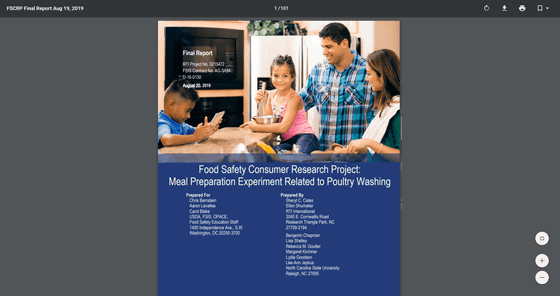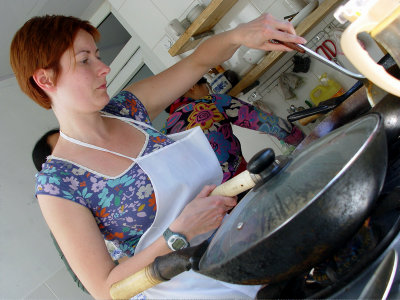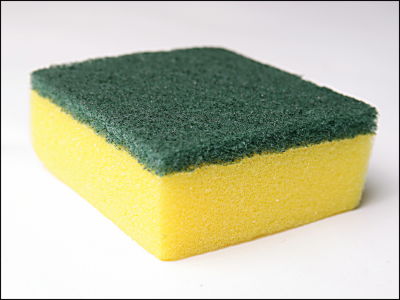'Do not wash chicken with water,' experts warn

by
Researchers from the US Department of Agriculture (USDA) and North Carolina State University published a research report on food washing dated 20 August 2019. Among them, the alarm sounded based on the data obtained from the experiment, ' Raw chicken should not be washed with water before cooking '.
(PDF file) Food Safety Consumer Research Project: Meal Preparation Experiment Related to Poultry Washing

Experts Are Warning People Not to Wash Their Chicken.Here's Why It's So Dangerous
Raw chicken can be contaminated with bacteria that cause food poisoning, such as Campylobacter , Salmonella, and Clostridium perfringens . According to the Ministry of Health, Labor and Welfare's (PDF file) 2018 Food Poisoning Occurrence Status (Summary Version) and Major Food Poisoning Incidents, out of 1,330 food poisoning incidents in 2018, food poisoning by Campylobacter accounted for 24.0% of all cases, Clostridium perfringens According to the company, 2.4% are based on salmonella and 1.4% are based on Salmonella. In particular, the number of incidents of Campylobacter is third after Anisakis and Norovirus .

The research team recruited 300 subjects and prepared a meal containing chicken thighs and salad in the North Carolina State University test kitchen. The subjects were divided into two groups and one group was informed by email how to cook chicken safely, but the other group was not given any information.
All subjects admitted that they had washed chicken in the past, saying that `` because chicken is washed before cooking '', `` to remove chicken meat '', `` because the family did so '' It seems. Therefore, the researchers attached 'harmless and traceable E. coli' to the chicken used in the experiment and cooked it while hiding the fact from the subjects.
In a group that had previously been notified by email about how to cook chicken safely, “Do not wash the chicken before cooking”, 93% of the members cooked the chicken without washing it as instructed. However, only 39% of the groups that did not receive any information cooked chicken without washing.
The following image shows the sink after washing the chicken. The left image was taken under normal light and appears to be clean. However, if you look at the right image taken under special light, you can see that a lot of dirt is attached around the sink due to splashed water from the chicken.

The research team also investigated how much E. coli was detected in the finished salad. In the case of salad using chicken that was not washed with water, E. coli was detected in the salad at a rate of 20%. In the case of salad using chicken washed with water, E. coli was detected in the salad at a rate of 26%. In other words, it was suggested from experiments that washing chicken with water would not be hygienic at all, but could have a more negative effect.
On the other hand, researchers predicted that E.coli was detected in 20% of salads without having to wash the chicken before cooking, because the researchers predicted that 'participants did not wash their hands and utensils correctly'. USDA argues that the following points should be noted for hygienic cooking.
・ After handling fruits and vegetables, you should cook meat at the end.
・ You should use a cutting board exclusively for raw meat.
• Raw meat should not be washed.
• After touching raw meat, wash your hands with soap for at least 20 seconds before touching other foods.
• Use a food thermometer to ensure that the chicken is well heated at least 73 ° C before eating.
Carmen Rottenberg, director of USDA's food safety inspection service, said, 'Washing or rinsing raw meat or chicken with water can increase the risk of food poisoning because germs spread around the kitchen. There is a warning. “Also, if you do not wash your hands for 20 seconds immediately after handling raw food with your bare hands, you could increase the risk of food poisoning as well.”
The Ministry of Health, Labor and Welfare has reported that the center part must be heated at 75 ° C or higher for 1 minute or more for sterilization of Campylobacter, and the salmonella must be heated at 75 ° C or higher for 1 minute or more. In order to prevent the growth of Clostridium perfringens, storage at 10 ° C or lower or 55 ° C or higher is important, but the spores for growth can withstand heating at 100 ° C for 1 to 6 hours. So be careful not to overconfidence in heat sterilization.
Related Posts:
in Food, Posted by log1i_yk







